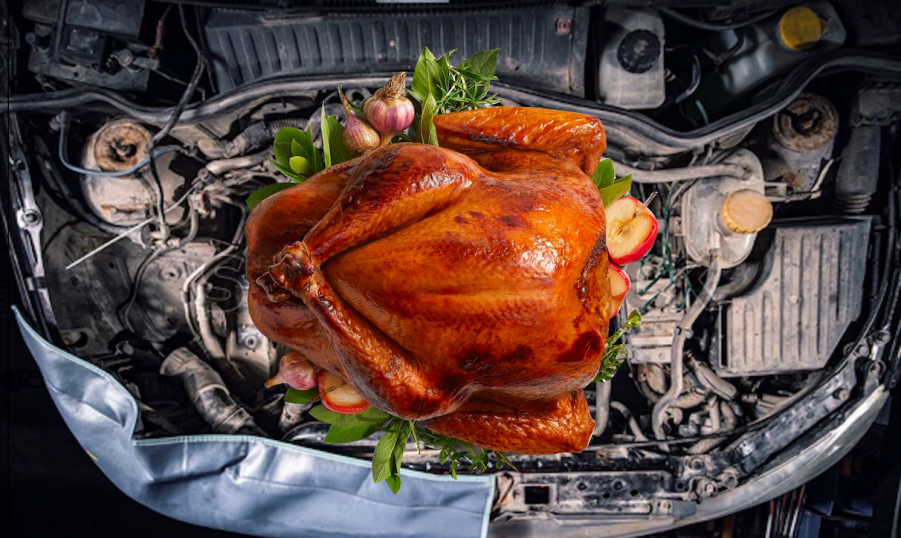
Thanksgiving Dinner How-To: Use Your Car Engine To Cook
If you’re a hard-core car or truck enthusiast, you’ve thought about what cooking over a hot engine is like for a long road trip. You might have even tried it. But 2022 is the year you should just do it. If you’re going to try, why not go all out and cook your Thanksgiving dinner in the engine? There are plenty of advantages, and just a few disadvantages. We’ll tell you how.
What’s the best way to cook on a road trip?

The best way to begin your new cooking tradition is to take it on the road. If you’re traveling to your Thanksgiving destination, it makes sense once you get there to have your turkey ready to eat. Cranking up the car in your driveway to cook is kind of a waste of gas. The stove in your house or barbeque in the backyard is a better way to cook the turkey. That said, on a long road trip or a family get-together at a park or other non-cooking venue, that’s different. It begs for using the engine heat to cook up something tasty.
Now, we know that your trepidation is mostly about the dirt and grime you’ll be cooking on. So first off, cover everything with aluminum foil. As you would do to a barbeque, it instantly makes for a clean cooking environment. Please note, if you’ve got a cracked exhaust manifold or otherwise are leaking exhaust fumes under the hood, it might not be such a good idea to entertain this cooking excursion until after you get that fixed.
What should/can I cook for my Thanksgiving road trip?

A heat source is how you cook a meal, and in this case, that source is the engine. That means for the best results this engine compartment cooking should be for travel. What you’ll need to do is convert cooking times to miles. Remember that hitting traffic or an exceptionally long curvy road means whether going 20 mph or 70 mph, the food is cooking.
Chicken breasts should take around 60 minutes to cook at 65 mph, according to HowStuffWorks. Sliced potatoes take around 55 minutes, with something more exotic like shrimp only needing around 30 minutes. The caveat to all of these times is that occasionally pulling over and checking its progress is the best step.
Where is the best part of an engine for the most heat?

Before you dump your food onto the engine, you’ll need to prepare it. Wrap it in tight aluminum foil packets. Go for a couple of layers to make sure everything is sealed in. You’ve got to keep that heat evenly cooking.
Then, gather your packages around the hottest parts of the engine. Those areas would be any metal parts, especially the exhaust manifold or manifolds (depending on whether it is a V8 or not). You may want to use a few drops of water to see how fast it sizzles to determine the hottest places.
Using the hood as a means of keeping your food in place is one way to secure it. Another is to use baling wire to tie it down, just don’t tie it to a fan or fan belt, or the throttle cable. Stay away from any wiring, and the same goes for hoses. They may not be as secure as they look. And don’t try cooking anything that is stew-like or liquid as they tend to splash all over in spite of how well you sealed your packets. Finally, make sure the engine is turned off while placing or removing food from your cooking engine oven.



